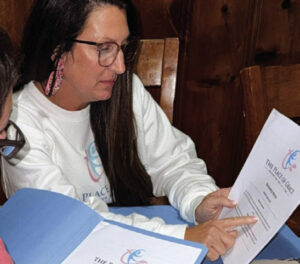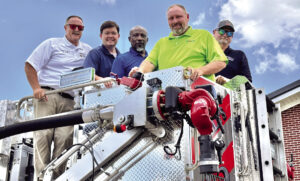The smell of homemade bread
By By Beth Randall / 4-H youth agent
Nov. 9, 2003
I can't think of many things that smell better than homemade bread baking in the oven. Can't you just imagine the aroma wafting through the house? Just thinking about it makes me hungry for the sourdough bread my mom baked when I was a kid.
The month of November is National Bread Baking Month, and I can't think of a better way to celebrate than by baking bread.
Baking bread together can be a real "bonding experience" for a family in more ways than one! Even though you can get into some real "sticky situations," it gives parents and children the opportunity to laugh, talk and just have a good time.
If you are interested in learning a little more about breads, I have just the thing for you. Lauderdale County 4-H will host a Quick Breads workshop for youth ages 8 to 18 on Nov. 13 at the Lauderdale County Extension Office. The cost of the workshop is $2 for supplies. Class size is limited and participants must call 482-9764 by Nov. 10 to register.
Bread is not only fun to make, but is nutritious. Bread is an inexpensive source of energy since it is high in carbohydrates but it is also a good source of protein, B vitamins, and minerals.
Whole wheat or enriched bread has more vitamins and minerals then does unenriched white bread. Always look for the term "enriched" on the label when purchasing white bread. Enrichment raises the levels of iron, niacin and thiamine to approximately that of whole-wheat flour.
There are two types of bread.
Quick breads can be baked immediately after mixing and do not require a rising period before you put them in the oven. The leavening agents most often used in making quick breads are baking soda plus an acid or baking powder.
Yeast breads contain yeast, which is a living plant that feeds on sugar and produces carbon dioxide, causing the bread to rise.
Examples of quick breads are biscuits, muffins, and cornbread. When making quick breads there are two mixing methods. The conventional method is when the dry ingredients are combined and shortening is cut into the dry ingredients; then liquid us added to the dry ingredients.
The muffin method is when you mix together all dry ingredients in one container. In a separate container all the liquid ingredients are combined; then the liquid ingredients are added to the dry ingredients.
There are some rules to follow when baking quick bread. Follow recipes carefully; read at least twice before assembling equipment and supplies. Measure the flour as directed. If the recipe calls for sifted flour, sift first and then measure. One cup if unsifted flour contains more flour than 1 cup of sifted flour.
Combine ingredients in the order given. Use the recommended size pan. Bake at the oven temperature given in the recipe. Before storing, cool the bread, then wrap.
So what does the ideal biscuit or muffin look like? The crust is uniformly brown and free from yellow or brown spots. They are uniform in shape and are free from bulges and are slightly rounded on top. A muffin is almost twice the volume of the unbaked bread. The flavor is pleasing with no decided taste of salt, fat, soda, baking powder or spices.
I hope you will try baking bread this month. You might just find a new hobby.
For more information on the 4-H Breads project, call your 4-H Agent. My number in Lauderdale County is 482-9764.













